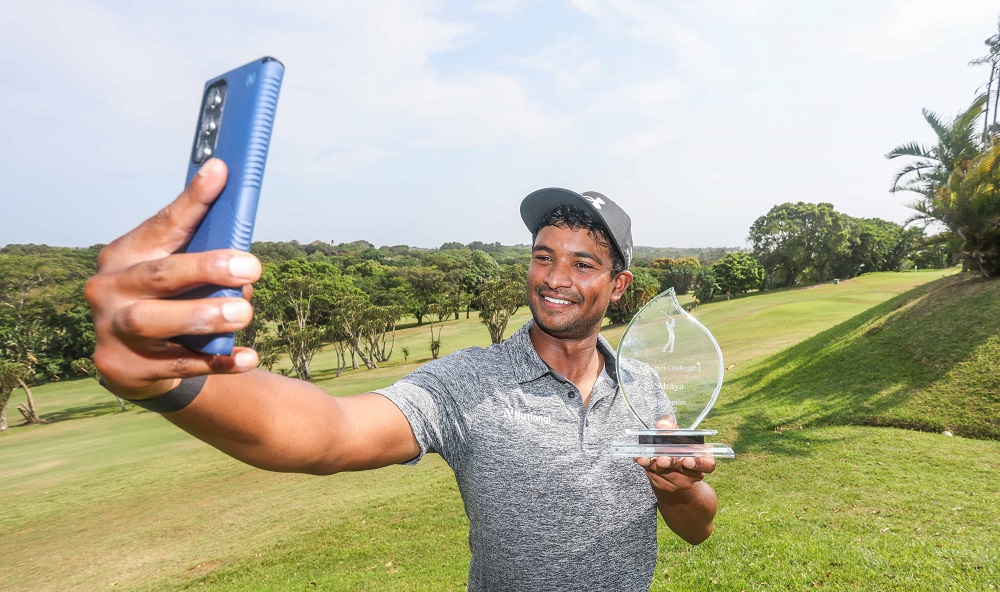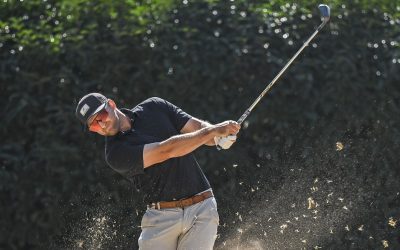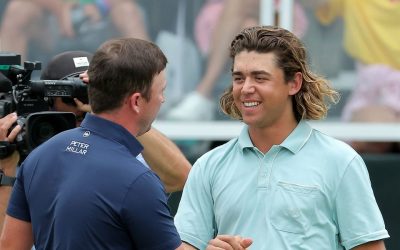First published in Compleat Golfer April 2024 edition
Re-evaluating the value of a first victory for a professional golfer takes a large degree of bravery as well as maturity. Dylan Naidoo took a look at his maiden Sunshine Tour title and he decided it came before he was ready for it.
When Naidoo won the Sun Sibaya Challenge at Umhlali Country Club at the end of October 2022, it seemed all his golfing promise was on the road to fulfilment. He’d been a professional since 2019 with a fine amateur career in the tank. But he followed that with three missed cuts in the following big DP World Tour co-sanctioned tournaments, and three more early in 2023 in Challenge Tour co-sanctioned events.
With the win, he came 37th on the 2022-2123 Sunshine Tour Oder of Merit. It felt a little disappointing, especially since he’d come 37th in his rookie year, the 2019-20 season. Then came the COVID year, when he came 55th, and in 2021-22, he came 56th. So why was the climb up the success ladder not all it should have been?
“I feel like the win almost came before I was ready for it,” he says. “I was talking to my girlfriend about this just the other night. She was like, oh, well, you’re only a couple of steps away from the PGA Tour. And I was like, no, no, no, no, we’re still a long way from that.
“But, you know, I think the challenges that you have along the way and the difficulties that you face are what make you the golfer that you want to be when you get to that top level so that you can stay there and sustain that level.
“There are a few guys who I’ve looked up to a lot in my life who have stepped up really fast and you go, wow, this is like superstar material, and then it all kind of comes crashing down quite quickly because there’s not really a lot of benchmarks achieved along the way – things I did along the way that made me a better golfer. And when I went into this little rut, this is what I did to improve. So I feel like my career hasn’t been as straightforward as I had projected it to be when I was younger, but I’m better for that.
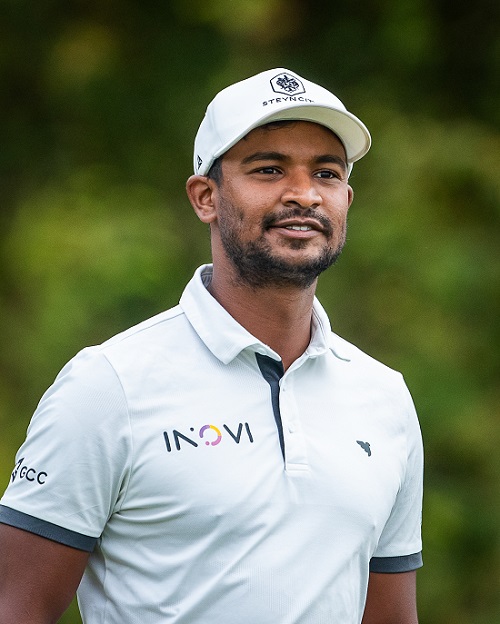 In the end, maturity has helped him reset his expectations, his timelines. “I think I’ve lowered my expectation and that’s helped me play better golf,” he says. “I think when I first came out on tour, I was very ambitious and obviously you want to achieve a lot, but in order to do that you need to earn it. You need to play the golf that’s going to step you up to the next level. And if you don’t earn it, it doesn’t feel as sweet as if you have.”
In the end, maturity has helped him reset his expectations, his timelines. “I think I’ve lowered my expectation and that’s helped me play better golf,” he says. “I think when I first came out on tour, I was very ambitious and obviously you want to achieve a lot, but in order to do that you need to earn it. You need to play the golf that’s going to step you up to the next level. And if you don’t earn it, it doesn’t feel as sweet as if you have.”
It’s feeling pretty sweet now: As of the end of February, he was 13th on the Order of Merit, with three top 10s. Those include a fourth-place finish in the Challenge Tour co-sanctioned SDC Championship at Zebula, where a pair of 64s during the tournament kept him right in the mix.
“I feel like my game is in a really good spot at the moment,” he says. “It took me a while to get to the level where I was at with my win, where my game is at that level much more consistently now than what it was before. And I also feel mentally I’m more calm, more at ease. At some places, you know some shots are difficult on the golf course, but instead of being at a stress level of 11, I’m at a stress level of six or seven. It’s a tough shot, but I feel like I can execute it.
“And before the Zebula result, I played quite nicely one the DP World Tour events. Made the cut at the Joburg Open, got 15th at Leopard Creek and 11th in Mauritius and I felt like I was really building and things were really a validation for me that things were going in the right direction. I haven’t really had great success at Zebula in the past, so I felt like I went in with very low expectations. So I said, just go play and if I can come in the top 20, great. I’ll make the cut and see what we can do after that. My game was looking good and I really had a good putting week. And the birdies fell and to get, I think, 20-under-par was really nice.”
Everyone always talks about how putting is critical, and that is something Naidoo has worked on. “I’d say in the last year or so, that’s probably the department of my game where there’s been a dramatic improvement. I think my ball striking has always been at the level that I can compete week in and week out. Even when I have a bad long game week, I know it’s still pretty good.
“But I kind of got a little bit fed up with how I was putting and I went to go see a guy in France, his name is Robin Cocq, and we just kind of built it from the ground up again, like just every single thing meticulous about where my ball position is, how far away from the ball I’m standing, what my grip needs to look like, just really dialled in everything so I have a very clear blueprint on what I want.
“That initially didn’t really work that well, but it just took a couple months of doing it. And he’s been great and I feel like I have a much better understanding of putting now than I did in the past. I feel like I was in primary school with putting before and now I’m like first, second year university. And so that’s been, it’s been really cool to see it start to improve gradually.”
And with putting, you can’t sit down and say, okay, I need results right now. You’ve actually got to work with it. “It’s been a lot of work,” he says. “And what’s been nice is I have a lot of feedback tools, a lot of putting start line, gate stuff, you know, and initially I’m hitting the gate like seven times out of 10, and I’m like, oh my goodness, this is not very positive feedback. It’s kind of negative feedback, but you need that too. You need to know where you’re at.
“And I remember just before Joburg Open, I was putting a bit iffy and I was doing my start line drill and I’m just absolutely hammering the gate. It’s not going through the gate. And I gave Robin a call and I’m like, dude, I’m not going through another set of co-sanctioned events where I say to myself, oh, my ball striking is at the right level but my putting isn’t good enough, I’m not doing that, like we’re gonna figure this out right now and we’re gonna fix it and over two hours on the Tuesday at Joburg Open we got it 100 percent perfect and that really was the catalyst for the good golf going forward.”
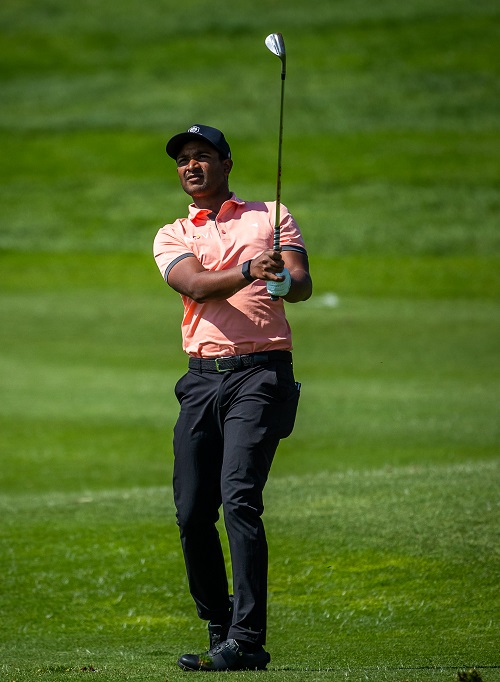 While that was the ‘light on’ moment, the fact of the matter was that the process had taken him to a point where, in the words of Rudyard Kipling, he ‘can meet with Triumph and Disaster, and treat those two impostors just the same’.
While that was the ‘light on’ moment, the fact of the matter was that the process had taken him to a point where, in the words of Rudyard Kipling, he ‘can meet with Triumph and Disaster, and treat those two impostors just the same’.
“I think it’s taken me from when I turned pro in 2019 to probably the middle of last year to this year to learn how to be a professional golfer and what my blueprint needs to look like for the next 20 years of my career,” says Naidoo. “In order to do that, there was a lot of trial and error. There was a lot of experimenting. But I now am so much clearer in what I want out of my own game, out of my body, out of my swing. In order to do that, I needed this platform on the Sunshine Tour to be able to get things right and get things to where I know that they’ll perform on the next level that I want to be at.
“I think the top 10-15% of our tour is fantastic. I think it’s really, really top quality players who can compete elsewhere and have competed elsewhere consistently. So, I think for me that’s always been great validation. When I do play well here I know that would translate anywhere else.”
So where to now? He’s not thinking too far ahead yet. “At the end of the season, re-evaluate,” he says. “Depending on the points I have accumulated on the DP World Tour and on the Challenge Tour, I’ll decide on what to do.
“I’ve always been quite long-term focused. And so it’s a little bit easier to look at the results over the last six months, over the last year, and know this is undoubtedly an improvement in my results and my scores and my stats. It’s a bit easier for me looking at it that way and knowing that eventually I’ll get mine over the long term. It’s a little bit frustrating in the short term but I know long term it’s paying off.”

